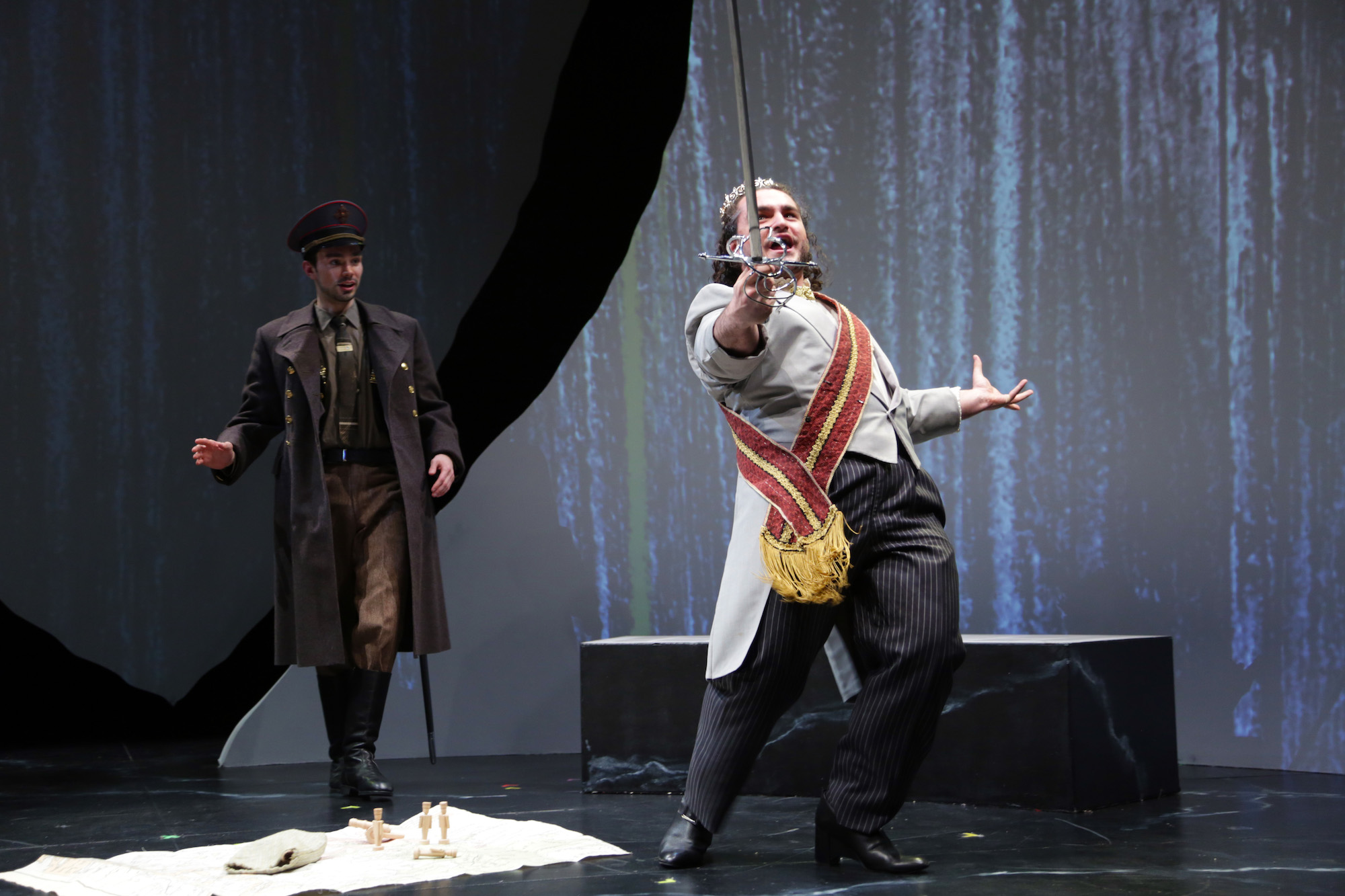


From poetry is metamorphosed performance, and back again, and thus the fire of theatre gains power and momentum, sparks on ancient fuel and fanned by gales of a foreboding future. You may be warm, you may feel dangerous heat, and you may ignite as a phoenix with awakened fervor to stand in your power and voice your truth, but no matter what transpires in this uninterrupted hour and twenty minutes: you will feel.
With that, Erin Shields’ “If We Were Birds” weaves Ovid’s myth of Tereus and Philomela in a rich vision that is fresh, beautiful, and seductively terrifying, and the Connecticut Repertory Theatre is an exquisite vessel to present such a theatrical undertaking. “If We Were Birds” explores the characters of the myth--a tale of rape and revenge--with both lyrical poetry and contemporary storytelling, exploring tragic themes with vivid detail in every element: acting, set design, costuming, sound, lighting, puppetry, choreography. It is a play that needs to be read and re-read, seen and seen again to bask in the language, but the story is unmistakably understood at once.
At its core, the play is set in post-war Athens where a princess is promised to a military hero, and violence of every nature ensues in the name of blood, lust, and power. Opening the play where Ovid’s myth ends are women: the young Philomela (Megan Casagrande), and, even before we meet the betrothed Procne (Carly Polistina), a chorus of the once-voiceless slaves. Both Casagrande and Polistina manage strong performances throughout the piece as the sisters, adept at living in the worlds of artistic interpretation and grounded character connection. Casagrande maintains Philomela’s spirit from ingenue, through violation, and ultimately as survivor. Polistina organically shifts through Procne’s phases of optimistic maiden, passionate mother, and powerful avenger.
This “chorus,” however, is not simply a unified voice as a traditional Greek Chorus would be; they are Every woman, they are Each woman, they are ALL women and ANY woman. Their stories are grown of the same blood-soaked soil, but each are specific and horrific, harvested from 20th century accounts. The actresses who portray these women are also adept at being both unified and individual in their performances. An archetype is embodied perfectly by each actress. Elizabeth Jebran as The Bleeding One--who also voices the child Itys and portrays a comedic, messenger-type Servant--introduces this storytelling of the women by fearlessly initiating the audience into this world where to the victors go the right to victimize, and she is unflinching in the telling. Continuing in blood themes, Eilis Garcia as The Pregnant One elucidates the trauma of rape-pregnancy, and is able to share such a nuanced experience with reverence and realism. We also meet Pearl Matteson as The Young One, whose performance is both immature and purposeful, ideal for this particular voice. Adrianna Simmons as The One with Dwindling Dignity shares the story of the elder--while not being one--with sovereignty and believability. Willow Giannotti-Garlinghouse as The Pious One is expert in retaining a beatific air while vocalizing her fear, grief, and rage. Thalia Eddyblouin as The Servant/Dwindling One, with no words and little action, demonstrates her place in the narrative with a stalwart performance. She reminds us to pay attention to those who have yet to find their voice.
In a play which highlights the passion and power women may wield when bringing atrocities to justice, it is crucial to cast male actors who can play the patriarchal fools and kings (sometimes one and the same) with nuance and dimension. Matthew Antoci portrays a jocund and flamboyant Pandion with aplomb, down to his boot heels, with equal veracity as an aggrieved father. Juxtaposed in character is the poem’s violent perpetrator Tereus, who Aidan Marchetti handles dexterously in all of his personality shifts, always able to tap into the core of chaos no matter the veneer of the situation.
With intense monologues, evocative themes, and jarring “intimacy choreography (by Marie Percy),” this is a play that must be handled by a mighty talented team, and UCONN's Department of Dramatic Arts is exemplary. Director Helene Kvale guides this cast through sensitive territory that manages to explore hilarity and horror with precise skill. Dramaturgs Lizz Mangan and Eddie Vitcavage are imperative to share insights on such a work that references both ancient literature and modern society rife with tragedy. Taowen Pan’s costume design succeeds in being both symbolic and essential, allowing the actors to live in performance and corporeal spaces--sneakers, sweaters, fringe, lace; it's all there. Neda Izadi’s puppetry is integral in bringing this tragedy to a visceral conclusion. Casey Lampert’s scenic design, with its yonic cliff space and open scene plan, is just the right balance of fixed and malleable for the emotional levels of this performance. Lighting design by Ally Zerio and sound design by Mack Gauthier work in tandem to color this dramatic world.
As the audience is reminded by CRT’s Artistic Director, Matthew Bradford, “If We Were Birds” is a community conversation about humanity, love, power, trauma, and justice, and it is with community that voices may restore, healing begin, and positive change take flight.
To experience “If We Were Birds” at the Connecticut Repertory Theatre now through April 7 in the Studio Theatre in the UCONN School of Fine Arts Building, contact the box office at 860-486-2113 or visit their website at https://crt.uconn.edu. CRT is located on the UCONN campus at 802 Bolton Rd, Unit 1127, Storrs, Connecticut. Note that there is no intermission and the production is recommended for mature audiences as it contains scenes of sexual content, sexual and verbal violence, and partial (superfluous) nudity. There will be talkbacks following performances on April 4th at 7:30pm, April 5th at 8pm and April 6th at 2pm.
N